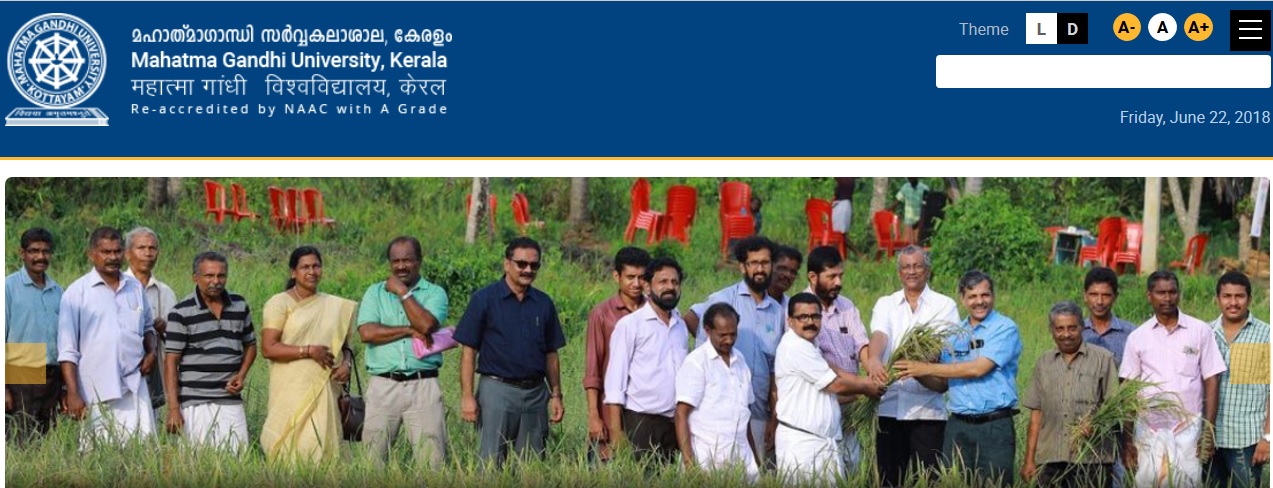ME010502 Computer Aided Design & Manufacturing B.Tech Model Question Paper : mgu.ac.in
Name of the University : Mahatma Gandhi University
Department : Mechanical Engineering
Degree : B.Tech
Subject Code/Name : ME010 502/Computer Aided Design & Manufacturing
Sem : V
Website : mgu.ac.in
Document Type : Model Question Paper
Download Model/Sample Question Paper : https://www.pdfquestion.in/uploads/mgu.ac.in/5346-ME502.doc
MGU Computer Aided Design Model Paper
B.TECH Degree Examination, November 2012 :
Fifth Semester :
Branch: Mechanical Engineering
ME010 502: Computer Aided Design & Manufacturing
Time: 3 hours
Maximum Marks: 100
Related : Mahatma Gandhi University Structural Analysis I B.Tech Model Question Paper : www.pdfquestion.in/5342.html
SECTION – I : (Answer all questions)
1. What are the storage devices in CAD? (3 marks)
2. Discuss various components of an NC machine (3 marks)
3. Explain the concept of cutter offset in NC machining (3 marks)
4. What are the different types of coding systems used in Group Technology? (3 marks)
5. Discuss different types of sensors used in robot applications. (3 marks)

SECTION – II : (Answer all questions)
6. Explain the various types of transformations implemented in 2D graphics (5 marks)
7. Describe different types of control systems used in NC machines (5 marks)
8. Write notes on five important M Codes and G Codes used in Part programming (5 marks)
9. What is group technology? Explain the benefits in adopting G.T. (5 marks)
10. Explain six degrees of freedom in robot motion with the help of a figure. (5 marks)
SECTION – III : (Answer all questions)
11. MODULE I :
a. Describe DDA Line drawing Algorithm with a suitable example (12 marks)
OR
b. Describe the Bresenham’s Circle drawing Algorithm with a suitable example (12 marks)
c.
12. MODULE II :
a. What are the components of a PLC? Explain the programming of a PLC using a ladder logic diagram for a water level controller? (12 marks)
OR
b. Explain the working of the following
i. Resolver (4 marks)
ii. Inductosyn (4 marks)
iii. Encoder (4 marks)
13. MODULE III :
a. Three holes of diameter 10 mm each are to be drilled on a mild steel plate of length 200 mm, breadth 120 mm and thickness 12 mm. Use the lower left corner of the part as the origin in the XY system. The coordinate positions of the holes with respect to the origin are (40,25), (100,60) and (160,25) respectively. The cutting speed is 50 m/min and feed 0.06 mm/rev. Write the manual part program to drill the holes in the word address format. Use absolute positioning. (12 marks)
OR
b. Write an APT part program to perform drilling of three holes on a mild steel plate. Use part geometry and machining data given in the above question 13(a) (12 marks)
14. MODULE IV :
a. Explain the code structures of variant and generative process planning methods (12 marks)
OR
b. Explain OPITZ and MICLASS Coding systems (12 marks)
15. MODULE V :
a. Discuss basic configurations of Industrial Robots. (12 marks)
OR
b. Elaborate on any three applications of robots in detail. (12 marks)
Computational Fluid Dynamics
: (AN 010 701)
Time: 3 hours
Maximum: 100 marks
Part A
Answer all questions
Each question carries three marks
1. Why is staggered grid adopted in compressible flow?
2. Explain vortex panel method.
3. What is the stability criterion for Mac Comack method?
4. Explain the boundary value problem in potential flow using velocity potential.
5. Distinguish between vortex centered approach and cell centered approach in finite volume method. (3×5 = 15 Marks)
Part B
Answer all questions
Each question carries five marks
6. Mention the mathematics properties of elliptical and hyperbolic fluid dynamic equation.
7. Show that a source flow is a physically possible incompressible flow everywhere except at the origin.
8. In the case of quasi one dimensional compressible flow in a converging diverging nozzle, derive unsteady mass conservation equation in differential form.
9. Explain finite element solution of potential flow using the Galerkin approach.
10. Explain the concept of numerical stability and outline Fourier method of analyzing numerical stability. (5×5=25 marks)
Part C
Answer all questions
Each question carries 12 marks
11. Derive the continuity (mass conservation) equation in differential form for incompressible flow. How will you discretize the equation?
OR
12. Derive the momentum and energy equation for unsteady quasi one dimensional flow. Express these in terms of non dimensional variables and suggest a method for its numerical solution
13. (i)Explain velocity potential and stream function. Show that they satisfy Laplace equation in the case of steady incompressible irrotational flow.
(ii) A uniform stream U in the X direction combines with source at (a,0) and a sink at (-a,0).
Plot the Resulting streamlines and note any stagnation points.
OR
14. Calculate the pressure co-efficient distribution around a circular cylinder using source panel technique. A Positive line voretex K is trapped in a corner as in fig. Compute the total induced velocity vector at a point B(2a,a) and compare with the induced velocity when no walls are present.